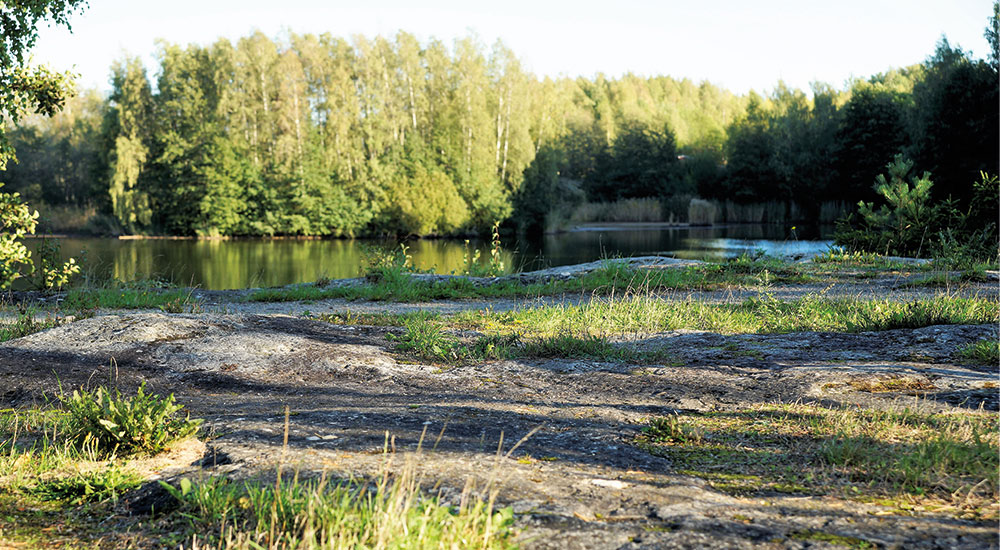
This was the forerunner of the Baltic Sea, and is known as the Baltic Ice Lake. Stolan is a unique location where the ice lake drained into the North Sea about 11,600 years ago when the inland ice melted and retreated. The story behind this is more dramatic than you might imagine. Right here, at the northern tip of Billingen, an enormous volume of water broke through and flooded across the landscape to the North Sea. The water level of the ice lake fell by 25 metres within a short period of time, probably around 1.5 years.
In this area, the bedrock was scoured clean and there is a two-metre-deep channel in the sandstone to remind us of the deluge. The easiest way to reach this area is from Sotarliden, near the old Mariestadsvägen road, from which there is a circular trail, or from the limestone quarry north of Stora Stolan. At Sotarliden there are meadows and pastures with a very diverse flora, including the marsh fragrant orchid. The view towards Kinnekulle and Klyftamon is magnificent.


